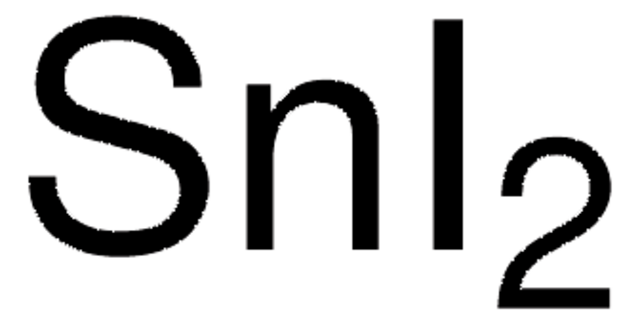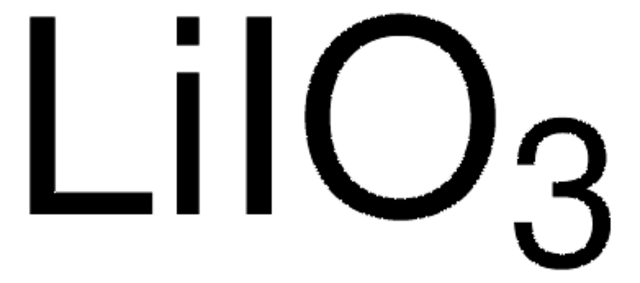518018
Lithium iodide
99.9% trace metals basis
Sinónimos:
Lithium(1+)iodide
About This Item
Productos recomendados
grado
for analytical purposes
Nivel de calidad
Ensayo
99.9% trace metals basis
Formulario
powder
características de los productos alternativos más sostenibles
Design for Energy Efficiency
Learn more about the Principles of Green Chemistry.
sustainability
Greener Alternative Product
impurezas
≤1500.0 ppm Trace Metal Analysis
mp
446 °C (lit.)
densidad
3.49 g/mL at 25 °C (lit.)
categoría alternativa más sostenible
cadena SMILES
[Li+].[I-]
InChI
1S/HI.Li/h1H;/q;+1/p-1
Clave InChI
HSZCZNFXUDYRKD-UHFFFAOYSA-M
¿Está buscando productos similares? Visita Guía de comparación de productos
Descripción general
Aplicación
- To prepare biodegradable polymer electrolytes.Rice starch complexed with LiI shows enhanced ionic conductivity as theaddition of LiI increases the number of mobile charge carriers.
- For Li-S batteries. LiIforms a protective coating on the surface of both negative and positiveelectrodes and prevents the dissolution of polysulfides on the cathode sidewhich significantly enhances cell rate performance.
Código de clase de almacenamiento
11 - Combustible Solids
Clase de riesgo para el agua (WGK)
WGK 3
Punto de inflamabilidad (°F)
Not applicable
Punto de inflamabilidad (°C)
Not applicable
Equipo de protección personal
dust mask type N95 (US), Eyeshields, Gloves
Elija entre una de las versiones más recientes:
¿Ya tiene este producto?
Encuentre la documentación para los productos que ha comprado recientemente en la Biblioteca de documentos.
Los clientes también vieron
Artículos
Research and development of solid-state lithium fast-ion conductors is crucial because they can be potentially used as solid electrolytes in all-solid-state batteries, which may solve the safety and energy-density related issues of conventional lithium-ion batteries that use liquid (farmable organic) electrolytes.
Lithium-Ion Battery Performance: Dependence on Material Synthesis and Post‑Treatment Methods
Global Trade Item Number
| Número de referencia del producto (SKU) | GTIN |
|---|---|
| 518018-10G | 4061832541815 |
| 518018-50G | 4061832541839 |
Nuestro equipo de científicos tiene experiencia en todas las áreas de investigación: Ciencias de la vida, Ciencia de los materiales, Síntesis química, Cromatografía, Analítica y muchas otras.
Póngase en contacto con el Servicio técnico











